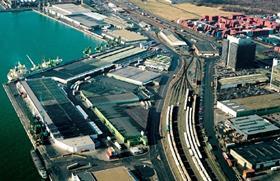
Belgium’s Port of Antwerp is aiming to reduce its environmental footprint by encouraging more transport companies to use rail and barge solutions, which it believes can be increased substantially over the next decade.
Under its new rail project AIS II (Antwerp Intermodal Solutions), Antwerp Port Authority is looking to take more containers off the road and says there is potential for 340,000 container-loads of freight to be carried to or from the Antwerp port area by rail.
At the present time, the Port Authority said that 200 container rail shuttles travel every week to and from 40 destinations in 13 countries, which it estimates keep 4,000 trucks off the road and prevent 66km of traffic jams.
In a statement, Antwerp Port Authority said the growth potential of more than 300,000 containers had been calculated in consultation with shipping companies, forwarders and shippers, and represents freight that is currently carried by road or is new to the port.
The governing body said increasing numbers of shippers in the port area are opting to carry goods by rail – a trend that prompted rail freight specialist Hupac to open a new terminal at Antwerp in January, with a handling capacity of 150,000 containers per year.
In collaboration with fellow rail freight companies IFB and BASF, Hupac will open another rail terminal with similar capacity at the beginning of March this year.
To cope with the growth in rail transport, Antwerp Port Authority said “a great deal of effort is being put into further developing the rail infrastructure in and around the Antwerp port area”.
Major infrastructure projects include building a second rail access on the right bank of the river Scheldt and construction of the Liefkenshnoek rail tunnel. The latter is due to open in 2014, with the aim of improving rail connections between the left and right banks.
Barge transport, another environment-friendly mode, is also taking more freight away from the roads. The Port Authority said that rail and barge transport between them have increased their share of the transport modal split by 14 per cent over the past 10 years.
In the case of rail, the organisation said it is aiming to increase its proportion from the current 11 per cent to 15 per cent by 2020, while it hopes to develop barge transport’s share from 32 per cent to 43 per cent within a decade.
By that date, it estimates that the share of road transport should have dropped from the present 56 per cent to 42 per cent.
Antwerp is the second-largest rail port in Europe after Hamburg, with 30m tonnes of freight annually carried by rail.



